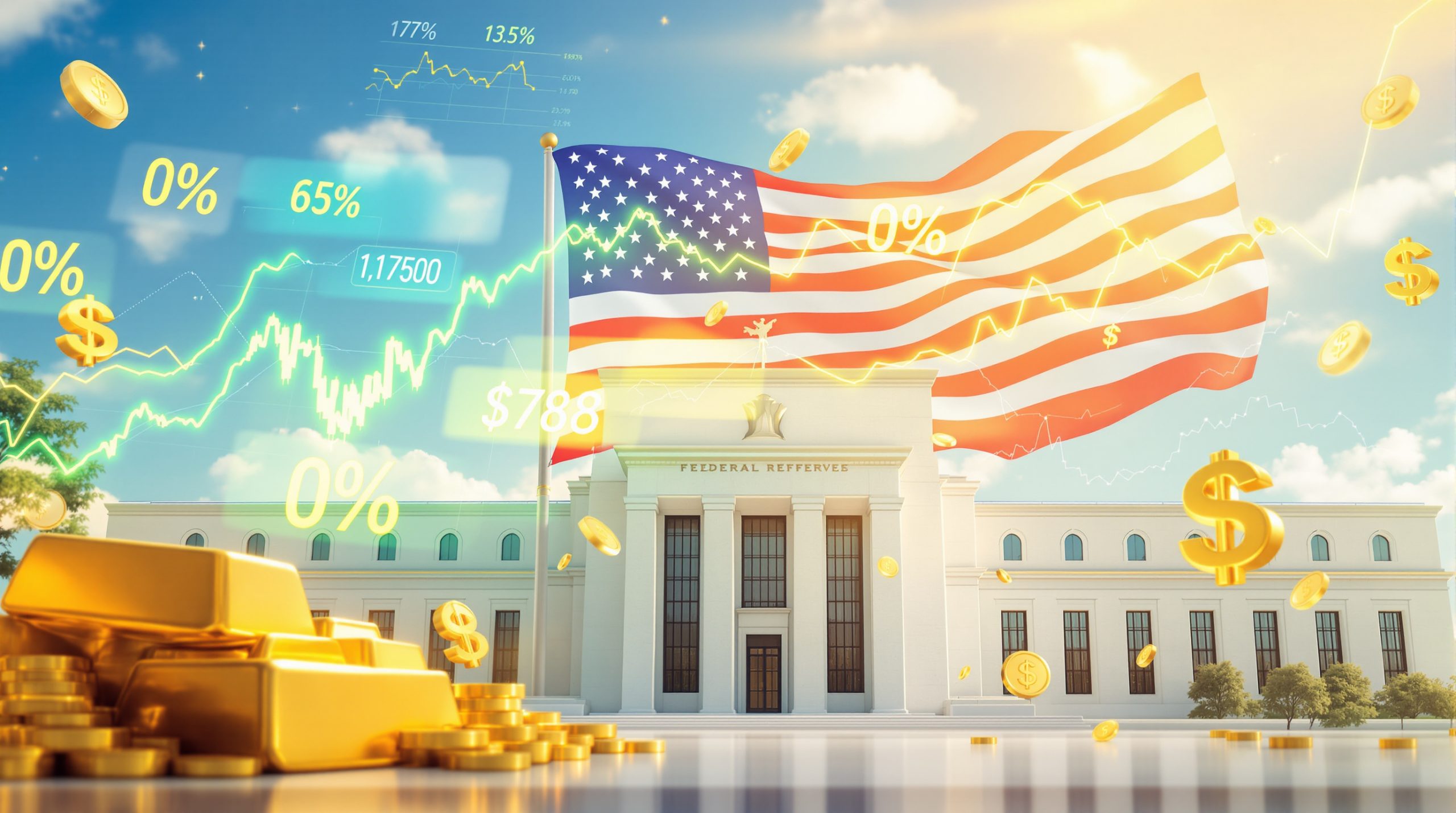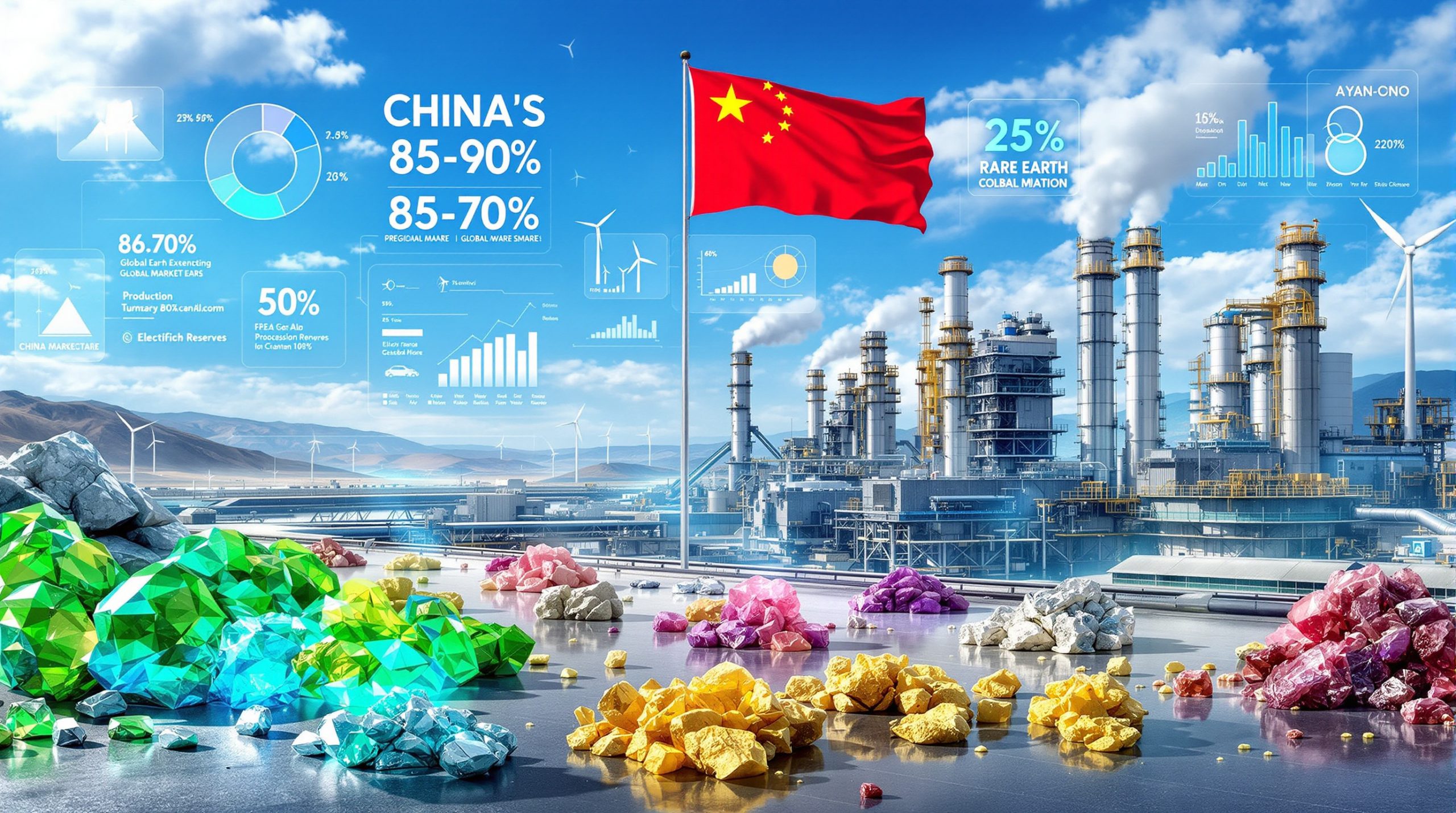What Is Happening to the US Dollar's Global Status?
The US dollar's position as the world's reserve currency faces unprecedented challenges. For decades, the dollar has dominated international trade, central bank reserves, and global financial systems. However, recent geopolitical tensions, trade policies, and economic realignments suggest a potential shift in this longstanding arrangement.
Recent actions by the United States, particularly the implementation of new tariff agreements with the European Union and Japan, signal a fundamental shift that could accelerate the decline of dollar hegemony. These policy shifts represent more than routine trade adjustments—they reflect a strategic pivot that may inadvertently undermine one of America's greatest economic advantages.
According to financial analyst Clen Chambers, "To maintain reserve currency status, you have to have a trade deficit. With efforts to stop that and balance trade, we could be witnessing the end of the dollar as the reserve currency because one follows the other." This relationship between trade deficits and reserve status represents a crucial dynamic often overlooked in mainstream economic discussions.
Understanding Reserve Currency Status
A reserve currency serves as the primary medium for international transactions, central bank holdings, and global trade settlements. This status has provided the United States with significant economic advantages, including:
- Lower borrowing costs (commonly referred to as "exorbitant privilege")
- Global demand for US debt securities
- Ability to conduct international transactions in its own currency
- Geopolitical leverage through financial systems
However, maintaining reserve currency status requires the issuing nation to run persistent trade deficits, exporting its currency to the world—a requirement with complex economic consequences.
This paradox represents what economists call the "Triffin dilemma"—the conflict between domestic and international monetary policy objectives that comes with issuing a global reserve currency. The United States must supply enough dollars to satisfy world demand, which inevitably leads to trade deficits and potential domestic economic distortions.
How Are Trade Policies Reshaping Global Currency Dynamics?
The recent wave of protectionist policies marks a departure from decades of globalization-focused trade strategies. These shifts reflect a growing recognition of the hidden costs associated with being the world's primary reserve currency issuer.
Recent US-EU and US-Japan Tariff Agreements
Recent tariff agreements between the US and major economic partners signal a fundamental shift in American trade policy. These agreements aim to rebalance trade relationships and protect domestic industries, but they may have far-reaching implications for dollar dominance:
- Reduction in US trade deficits could limit dollar circulation globally
- Tariffs effectively function as a broad-based tax, potentially raising consumer prices by 1-2%
- Trading partners may accelerate efforts to reduce dollar dependence
- Critical materials like steel, aluminum, and rare earth elements are becoming focal points in trade policy
As Chambers explains, "First of all, it's about securing their ability to fight—steel, aluminum, rare earth, chips. If you can't fight a war, you're weak." This perspective highlights how US economy and tariffs increasingly overlap with national security concerns.
The Manufacturing Strategy Behind Tariff Policies
The push for tariffs reflects a strategic pivot toward rebuilding domestic manufacturing capacity. This approach prioritizes:
- Securing supply chains for critical materials (steel, aluminum, rare earths)
- Rebuilding industrial capacity for national security purposes
- Reducing dependency relationships with trading partners
- Revitalizing the US as a "workshop of the world" rather than primarily a consumer economy
"China is now the workshop of the world," notes Chambers. "When Britain or America was the workshop, they ruled the world." This historical perspective suggests manufacturing capacity correlates strongly with global economic influence—a reality that is reshaping trade and currency relationships.
Why Might Reserve Currency Status Be Changing?
The dollar's global dominance has been a cornerstone of American economic power for generations. However, maintaining this position comes with significant trade-offs that have become increasingly apparent to policymakers and market participants alike.
The Hidden Costs of Dollar Dominance
While reserve currency status confers privileges, it also imposes significant costs on the issuing nation:
- Persistent trade deficits: The US must export dollars through trade imbalances, creating structural economic imbalances
- Manufacturing hollowing: Industries relocate to countries with export advantages, diminishing domestic production capacity
- Asset acquisition by foreign entities: Foreign holders of dollars eventually purchase domestic assets, transferring ownership of land, companies, and resources
- Fiscal indiscipline: The ability to borrow in one's own currency can enable excessive government spending and debt accumulation
"If you don't sort that out, you end up being owned by someone else," warns Chambers, highlighting how trade deficits ultimately lead to foreign ownership of domestic assets. This dynamic has played out across real estate markets, technology companies, and agricultural land throughout the United States.
Emerging Alternatives to Dollar Hegemony
Several developments suggest alternatives to dollar dominance are gaining traction:
- China's strategic approach to currency internationalization while avoiding reserve currency status
- Bilateral currency swap arrangements between major economies, reducing dollar dependency
- Development of central bank digital currencies (CBDCs) offering new settlement mechanisms
- Increased central bank gold purchases worldwide—creating a price floor and reflecting diversification
- Approximately 25% of Bitcoin mining capacity operating in sanction-affected regions like Iran
"China doesn't want to be the reserve currency," Chambers observes. "They want your currencies. They buy your farmland, tech companies, real estate." This strategy allows China to benefit from dollar dominance while avoiding its structural costs.
What Would a Post-Dollar Reserve World Look Like?
The transition away from dollar hegemony would represent a seismic shift in global economic architecture. However, contrary to common assumptions, this change could ultimately benefit the United States along with introducing new economic relationships globally.
Potential Benefits for the United States
Counterintuitively, a reduced global role for the dollar could benefit the US economy:
- Smaller trade deficits could strengthen domestic manufacturing and employment
- Reduced foreign ownership of US assets, preserving domestic control of strategic resources
- Greater fiscal discipline due to more limited borrowing capacity
- More balanced global economic relationships with trading partners
- Renewed focus on production rather than consumption-based economic growth
This transition, while potentially disruptive in the short term, could address many structural imbalances that have accumulated over decades of dollar dominance.
Global Economic Restructuring
A shift away from dollar dominance would trigger significant global economic adjustments:
- Trading partners would need to develop greater economic self-sufficiency
- Europe and Japan might experience economic revitalization through reduced dependency
- New regional currency arrangements could emerge for trade settlement
- Increased currency volatility during transition periods as markets adjust
- Elevated importance of physical assets like gold, strategic metals, and energy resources
As global currencies rebalance, nations that have positioned themselves strategically with tangible assets may enjoy significant advantages during the transition period.
How Are Nations Preparing for Currency Shifts?
Forward-thinking countries are already taking concrete steps to position themselves for a potential post-dollar world. These preparations reveal much about expectations for future economic and geopolitical developments.
Strategic Resource Accumulation
Nations are positioning themselves for potential currency realignments through:
- Gold accumulation: Central banks worldwide have dramatically increased gold purchases, creating a price floor for the metal
- Critical mineral securing: Countries are securing supplies of platinum, palladium, and other strategic metals with limited annual production (approximately 200 tonnes for platinum group metals)
- Energy independence: Nations are diversifying energy sources and supply chains, including renewed interest in nuclear power
- Digital asset exploration: Both state and private actors are developing cryptocurrency capabilities, particularly in regions under economic sanctions
These preparations indicate a serious reassessment of risk in the current monetary system and suggest significant concerns about potential currency volatility.
The Gold-Geopolitical Connection
Gold prices reflect growing concerns about currency stability and geopolitical tensions:
- Gold serves as a traditional "war chest" asset during periods of conflict
- Current gold pricing (around $2,350/oz) suggests market equilibrium based on current geopolitical assessments
- Further escalation in global tensions could drive prices significantly higher, with Chambers suggesting "$5,000 gold" if global stress increases
- Central bank purchasing has created a new demand floor for the metal
"If the global stress goes up another notch, gold will go straight to $5,000," predicts Chambers, highlighting the metal's role as a barometer of geopolitical risk. Recent all‐time high gold analysis supports this perspective.
What Role Do Digital Assets Play in Currency Evolution?
While traditional precious metals retain their historical role in monetary systems, digital assets represent an entirely new dimension in the evolving currency landscape.
Bitcoin as a "Flight Asset"
While gold traditionally serves as a war preparation asset, Bitcoin and other cryptocurrencies function differently:
- Digital assets provide mobility during periods of capital flight
- Cryptocurrency adoption accelerates during acute geopolitical crises
- Nations under sanctions (like Iran) have embraced mining and cryptocurrency infrastructure
- Approximately 25% of Bitcoin mining capacity is estimated to operate in sanction-affected regions
"Bitcoin is for flight… Gold is for war," explains Chambers, drawing a crucial distinction between these asset classes. This perspective helps explain why both can appreciate simultaneously despite their seemingly contradictory investment theses.
Institutional Adoption and Market Maturation
The cryptocurrency market has evolved from purely speculative to increasingly institutional:
- Corporate treasury adoption by companies like MicroStrategy provides price support
- Regulatory frameworks developing in major economies offer greater clarity
- Integration with traditional financial systems through ETFs and other vehicles
- Correlation with broader technology investment trends rather than pure monetary substitution
This evolution suggests digital assets are becoming an established component of the global financial landscape rather than a passing technological novelty.
What Investment Opportunities Emerge from These Shifts?
The potential realignment of global currencies creates specific investment opportunities across multiple asset classes. Strategic positioning before these shifts become widely recognized could provide significant advantages.
Strategic Metals: The Periodic Table Renaissance
Beyond precious metals, strategic industrial metals present compelling investment cases:
- Platinum and palladium: Limited production (approximately 200 tons annually) versus growing catalyst demand
- Rare earth elements: Critical for technology and defense applications with concentrated supply chains
- Industrial metals: Essential for manufacturing resurgence and energy transition
- Historical context: Palladium previously reached $4,000/oz versus current $1,000+ levels, demonstrating potential volatility
These metals combine industrial utility with monetary characteristics, potentially offering both inflation protection and participation in technological development. The growing focus on critical minerals energy security underscores their importance.
Energy Transformation Investments
The push for AI development and technological supremacy is driving massive energy infrastructure investment:
- Nuclear power revival as a reliable baseload power source
- Grid modernization to accommodate distributed generation
- Energy storage solutions addressing intermittency challenges
- Efficiency technologies reducing overall consumption
Energy security increasingly overlaps with national security concerns, creating a favorable environment for long-term infrastructure investment.
Manufacturing Resurgence Opportunities
As nations rebuild domestic manufacturing capacity, investment opportunities emerge in:
- Advanced manufacturing equipment and automation
- Robotics systems reducing labor cost disadvantages
- Specialized industrial materials supporting reshoring
- Supply chain technologies enhancing visibility and resilience
The revitalization of domestic production capacity represents a multi-decade trend with significant implications for investors in industrial sectors.
How Should Investors Navigate This Transition?
The potential end of the US dollar as a world reserve currency creates both risks and opportunities for investors. Strategic positioning rather than tactical trading offers the most sustainable approach to navigating these shifts.
Diversification Across Asset Classes
Prudent portfolio construction during currency transitions includes:
- Precious metals allocation (gold, silver, platinum group metals)
- Strategic commodity exposure tied to manufacturing and energy
- Reduced concentration in any single currency to limit systemic risk
- Consideration of digital assets for portfolio diversification
This multi-asset approach provides resilience against currency volatility while participating in emerging opportunities across sectors. Understanding the gold‐silver ratio insights can be particularly valuable in this context.
Technical Analysis as Information Flow Indicator
Market price movements often reveal information before it becomes widely known:
- Chart patterns may indicate institutional knowledge being priced in before public awareness
- Unusual correlations between assets can signal changing market dynamics
- Divergences between related assets may provide early warning signals of structural shifts
- Volume patterns often precede major price movements, revealing accumulation or distribution
"The charts tell you everything," suggests Chambers, highlighting how price action often reveals institutional positioning before narrative shifts occur in mainstream financial media.
Long-Term Strategic Positioning
Rather than tactical trading, focus on positioning for structural economic shifts:
- Identify industries benefiting from manufacturing resurgence
- Consider companies with strong positions in strategic resource production
- Evaluate businesses with pricing power during inflationary periods
- Assess geopolitical risk exposure in multinational investments
This approach requires patience but offers the potential for significant outperformance as currency realignments unfold over time. Understanding tariffs and investment impact becomes crucial in this environment.
Preparing for a Changing Financial Order
The potential end of dollar hegemony represents not just a currency shift but a fundamental reorganization of global economic relationships. While transitions create uncertainty, they also generate opportunities for those who understand the underlying dynamics.
The coming years will likely see continued currency volatility, strategic resource competition, and manufacturing realignment as nations adjust to a potentially post-dollar reserve world. Investors who recognize these shifts early can position themselves advantageously for the emerging economic landscape.
Disclaimer: This article contains forward-looking statements and speculative analysis regarding currency trends, economic shifts, and investment strategies. These perspectives should not be considered investment advice. Readers should conduct their own research and consult financial professionals before making investment decisions.
Ready to Spot Investment Opportunities in a Changing Global Currency Landscape?
Stay ahead of market shifts with real-time alerts on significant mineral discoveries from Discovery Alert's proprietary Discovery IQ model, helping you identify actionable investment opportunities as global currencies evolve. Explore historic returns from major discoveries by visiting our dedicated discoveries page and start your 30-day free trial today.




